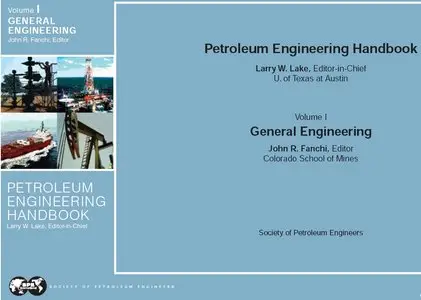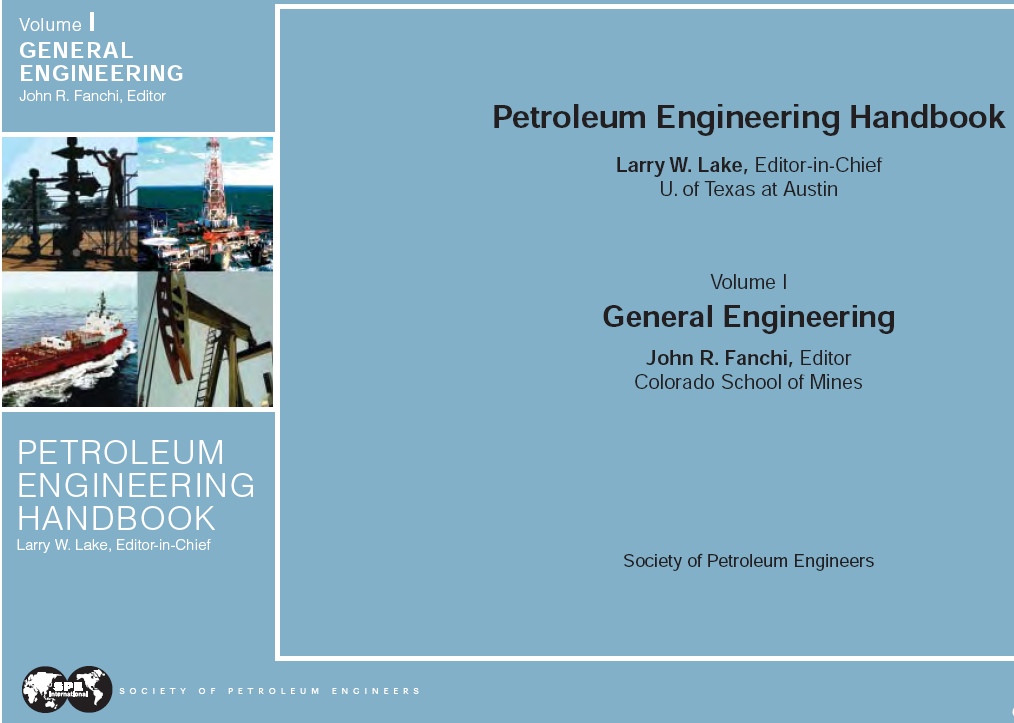"General Engineering". Petroleum Engineering Handbook Vol. 1
Society of Petroleum Engineers
Society of Petroleum Engineers | 2006 | ISBN: 1555631134 9781555631130 | 871 pages | PDF | 22 MB
Volume I, General Engineering, includes chapters on mathematics, fluid properties (fluid sampling techniques; properties and correlations of oil, gas, condensate, and water; hydrocarbon phase behavior and phase diagrams for hydrocarbon systems; the phase behavior of water/hydrocarbon systems; and the properties of waxes, asphaltenes, and crude oil emulsions), rock properties (bulk rock properties, permeability, relative permeability, and capillary pressure), the economic and regulatory environment, and the role of fossil energy in the 21st century energy mix.
General Engineering, Volume I of the new Petroleum Engineering Handbook, has been designed to present material that is needed by all practicing petroleum engineers. It includes chapters on mathematics, properties fluids, rock properties, rock/fl uid interactions, economics, the law, and the social context of fossil energy. The mathematics chapters of this volume are a major departure from previous editions. The mathematical tables presented in previous editions are now readily available using hand-held calculators or software on desktop computers. The mathematics chapters present mathematical topics that petroleum engineers need to better understand literature and the software they use on a day-to-day basis. Topics such as vibrating systems, ordinary and partial differential equations, linear algebra and matrices, and Green’s functions are introduced and references are provided for readers who would like to pursue the topics in more detail. The discussion of fluid properties covers fluid sampling techniques; properties and correlations of oil, condensate, and water; hydrocarbon phase behavior and phase diagrams for hydrocarbon systems; and the phase behavior of water/hydrocarbon systems. Two chapters consider the properties of waxes, asphaltenes, and crude emulsions. Rock properties and rock/fluid interactions are discussed. The rock properties include bulk rock properties, such as porosity, elastic rock properties, and rock failure relationships. Measurement techniques and models of singlephase permeability are then presented, followed by a review of the properties that describe the interaction between rocks and fluids, notably relative permeability and capillary pressure. In addition to mathematics, fluid properties, and rock properties, petroleum engineers need to understand economic and legal issues. Essential aspects of the economic and regulatory environment are addressed in the section. A brief review of the role of fossil energy in the 21st century energy mix ends the volume.



